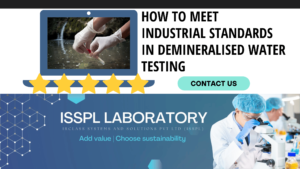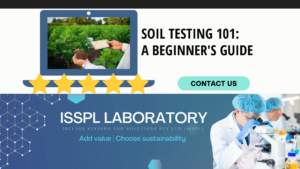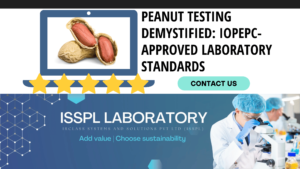An Overview by Team ISSPL - Analytical Testing Laboratory in India
ToggleAntioxidants are integral compounds in food products. The antioxidants with free radicals can pose diverse benefits, such as anti-aging and anti-inflammatory effects on the human body. Hence, the antioxidants are used in multiple applications and development stages.
In food technology, the antioxidants have become essential parts of foodstuffs. It helps enrich the foods and eradicate different types of health problems. However, the antioxidant properties can impact the shelf life and stability of a food. The testing mechanism helps determine the antioxidant activities of natural foods and their components. Antioxidants are also vital for food preservation and stabilization. As a result, testing steps are paramount for the manufacturers in the industry.
Antioxidants and food testing
The modern packaging techniques for food preservation involve high-quality and edible films or coatings. The protective features of edible films and coatings can be enhanced with the help of antioxidants. The antioxidant activity changes with the various metabolic activities as well. The integral role of antioxidant enzymes makes them an indispensable part of the food industry. These additives also help eliminate diseases with natural benefits. All these qualities have enhanced the significance of antioxidants in the pharmacology, cosmetics, and medicine industry.
Stability of food oil and its connection with antioxidants
Food stability is integral to prolong the shelf-life. The edible oils and fats under high heat and frying conditions can be difficult. It is because of the oxidation rate. The speed of oxidating activities increases at extreme conditions of temperature and time. There may be adverse impacts due to the poor thermal stability of antioxidants. It may cause premature decomposition and food spoilage in the long run. Also, the antioxidants can be volatile and promote evaporative losses during frying. Antioxidants get consumed rapidly during free-radical oxidation, and they degrade at elevated temperatures while frying.
The ideal level of antioxidants must be checked during frying activities and operations. TBHQ is a synthetic phenolic antioxidant and one can find it in the food industry to enhance the overall stability of edible oils. It is a stable compound and can withstand adverse impacts at high temperatures. Also, it is less volatile than BHA or BHT. The preventive features and qualities of TBHQ increase the stability of oils during frying. The premium qualities can also be passed on to the fried foods, facilitating the shelf life.
Food-grade methyl silicone or dimethyl polysiloxane are ideal components for frying oils. Why? Because it prevents the foam formation and increases the fry life by reducing thermal oxidation. Silicones are one of the best polymerization inhibitors. They surge the smoke point of oil, developing a surface-to-air barrier. The antioxidants and silicones promote synergistic effects in the oil and edible products.
The impacts of oxidation on human health
The process of oxidation can damage human cell membranes and other biological components, like – cellular proteins, lipids, and DNA. When oxygen in the body gets metabolized, it develops unstable molecules. These unstable molecules are called free radicals. The unrestricted radicals can steal electrons from other molecules. It damages the DNA and other cells. The human body can cope with a limited number of free radicals and necessitates them for optimal functionality. However, the damage stimulated in the body by an overload and overexposure of free radicals can be life-threatening. Over time, it may become irreversible and cause certain diseases in the heart and liver. It can also increase the chances of developing carcinogenic cells in various organs of the body. (such as oral, esophageal, stomach, and bowel cancers) Oxidation in the body can be accelerated by stress, smoking, alcohol, sunlight, pollution, etc.
Free radicals and their impact
Antioxidants are found in foods and the beneficial effects of these compounds can prevent the damage caused by free radicals. Antioxidants can benefit your body by neutralizing the free radicals. It includes – nutrient antioxidants, vitamins A, C, and E, and the minerals copper, zinc, and selenium. Apart from the vitamin and chemical sources, one can find them in dietary food compounds, like – phytochemicals in plants, etc. These are ideal choices with enhanced antioxidant effects compared to vitamins or minerals. These are non-nutrient antioxidants like – lycopene in tomatoes and anthocyanins in cranberries. The adverse impacts caused by free radicals are –
- Deterioration of the eye lens, promoting vision loss
- Inflammation of the joints
- Impairment to nerve cells in the brain increases the chances of Parkinson’s or Alzheimer’s disease.
- Accelerated risk of coronary heart disease, with free radicals and low-density lipoprotein (LDL) cholesterol on the artery walls
Summing up the critical aspects
- Different edible oils are available in the market for various frying applications. These products can be sourced from plants, like – soybean, canola, groundnut, peanut, palm, sunflower, safflower, cottonseed, corn, palm kernel, coconut, and olive oils. It can also be derived from animal fats, like lard and tallow. The mid-oleic and high-oleic vegetable oils are ideal for frying applications. These oils could be used directly or blended with the conventional vegetable oils. The fatty acid composition in the oils determines the frying performance. It also determines the oil’s turnover rate and shelf-life.
- The diverse chemical changes in edible oils and fats can impact the human body. It can create adverse impacts during processing, storage, and frying operations. The addition of antioxidants can delay and restrict lipid oxidation. As a result, it improves the shelf-life of edible oils, animal fats, frying oils, etc.
- Synthetic antioxidants are also suitable additives for edible oils and fats. These are vital to retard oxidation during storage and frying, increasing oil stability.
Lab testing solutions – The ideal choice
One must focus on reviewing the various attributes related to antioxidants in oils and edible fats. Laboratories in the country have an integral part in the process. Utilize the extensive testing measures for the following attributes and ensure the best industrial outcome, safeguarding human health.
- Color
- Viscosity
- Foam height
- Smoke point
- Peroxide value
- Conjugated dienes
- Free fatty acids (%) or acid value
- Fatty acid composition
- Iodine value
- Dielectric constant
- Refractive index
- Total polar compounds (TPC)
- Dimerized and polymerized triglycerides
- Epoxy value
All the above-mentioned testing aspects are critical to review. The antioxidants can enhance shelf life and preserve the quality of edible oils and fats. They reduce the pace of oxidation reactions by interfering with the lipid autoxidation reaction cascade. The accurate food testing reports make them cost-effective, safe, and easy to handle and use.
Photo by form PxHere







